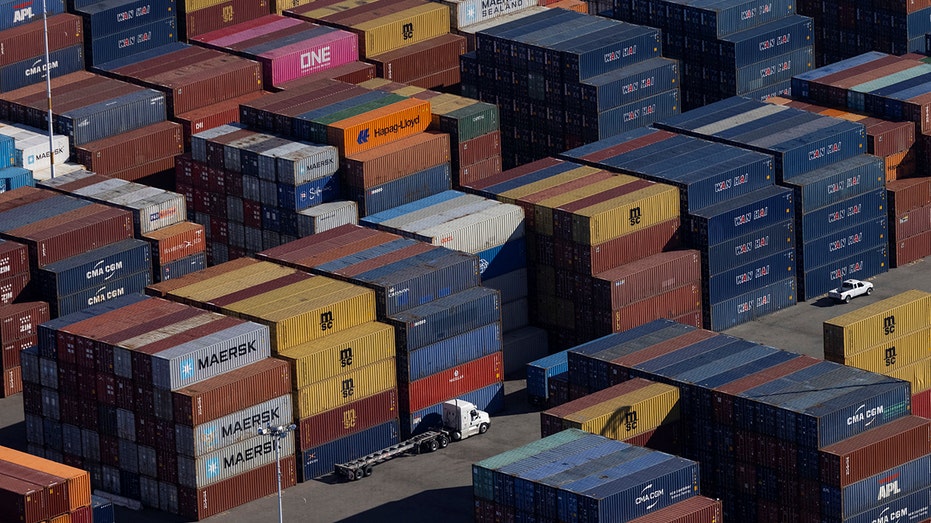President Donald Trump on Thursday signed an executive order imposing reciprocal tariffs on U.S. trading partners, effectively raising duties on imports to match those levied on America’s exports.
“Today is the big one: reciprocal tariffs,” Trump wrote on his social media platform, Truth Social, ahead of the announcement. His executive order starts a process that could lead to reciprocal tariffs being imposed within weeks after the White House’s trade and economic team studies America’s trading relationships, an official told reporters on a conference call.
The Trump administration aims to complete its trade review by April 1 and plans to target what it calls the most “egregious” issues first, including countries with large trade surpluses with the U.S. and the highest tariff rates on American goods. The president’s tariffs would match other countries’ higher tariff rates and aim to counter other trade barriers like burdensome regulations, value-added taxes, government subsidies and exchange rate policies and to negotiate with some countries to reduce those barriers.
A new analysis by Goldman Sachs economists led by Jan Hatzius looked at how the reciprocal tariffs could work and found that they would likely increase the average tariff levied on imports to the U.S., though they could help reduce trade uncertainty as well.
TARIFFS COULD FACTOR INTO FED’S RATE-CUT PLANS AMID INFLATION CONCERNS, EXPERTS SAY
“If applied at the product-specific level (e.g., the U.S. tariff on cars from the EU would equal the same rate the EU applies on cars from the U.S.), the U.S. weighted average tariff rate might rise by about 2 [percentage points], we estimate. If applied at the country level, the effect could be smaller,” the Goldman economists wrote.
“While a reciprocal tariff policy poses risks, it is also possible that it could incrementally reduce trade policy uncertainty once announced.
VOTERS REJECT TRUMP’S TARIFF PUSH; MOST BELIEVE POLICY WILL HURT ECONOMY
“President Trump’s comments suggest that he views this policy as an alternative to the 10-20% universal tariff he has discussed in the past,” the economists wrote. “If U.S. tariffs are set to match foreign tariff rates, it would theoretically make it less likely that U.S. tariffs would rise substantially further. It might also ultimately lead some trading partners to reduce tariffs (and theoretically a reduction in U.S. tariffs as well).”
They also said there are risks related to reciprocal tariffs in the event the Trump administration attempts to equalize non-tariff barriers (NTBs) to trade, which they note are “difficult to quantify but could result in a greater increase.”
“The main risk is that the Trump administration could consider value-added taxes (VATs) in the calculation, which would raise the average effective tariff rate by 10pp further,” the economists wrote. “However, while President Trump has criticized VATs in some countries, there is no indication at this point that the reciprocal tariff policy he plans to announce would include VATs in the calculation.”

While the reciprocal tariffs may be the latest step in Trump’s efforts to reshape U.S. trade policy, the report noted that there will likely be further developments as the president’s term progresses.
“Of course, even if President Trump views reciprocal tariffs as an alternative to more sweeping measures at the moment, we are entering only the fourth week of a four-year presidential term, and it seems likely there may be many further tariff announcements even if he does announce reciprocal tariffs this week,” the Goldman economists noted.
TRUMP TARIFFS PROMPT WARNINGS FROM TRADE GROUPS
Kevin Hassett, director of the National Economic Council, told reporters Wednesday “reciprocal tariffs are absolutely a high priority for the president and have been forever” and signaled that discussions about them had begun with foreign trading partners.
“Our trading partners charge us way more in tariffs than we charge them. And it’s something he talked about before, and there’s going to be a lot more action on it today. We even started to have negotiations with other countries,” he said.
Hassett was asked what the negotiations with other countries have entailed and replied, “We were just laying the groundwork for discussions over reciprocal trade.”
He added that Howard Lutnick, Trump’s nominee to be commerce secretary, led those meetings.
FOX Business’ Kristen Altus and Reuters contributed to this report
Read the full article here


